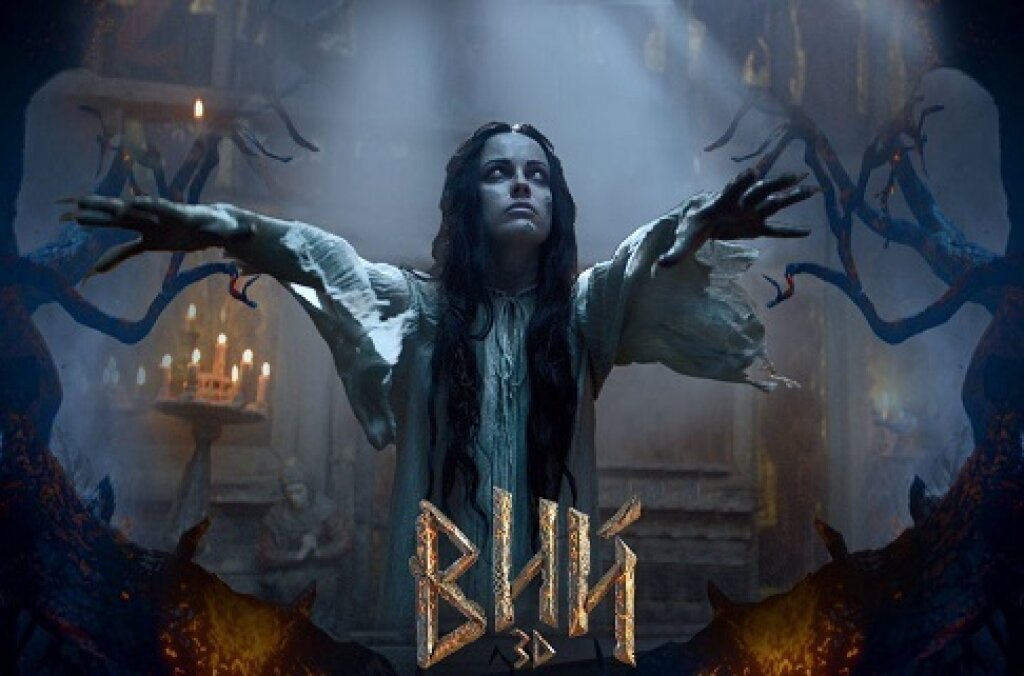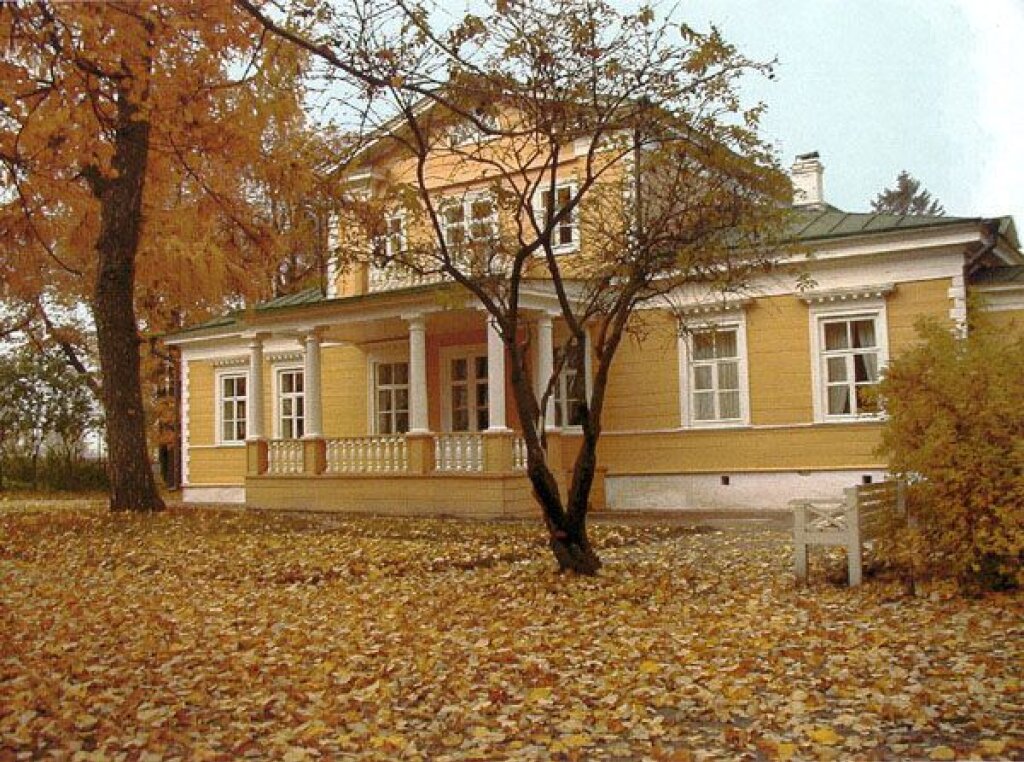Elena Gapova is an Associate Professor of Sociology at Western Michigan University.
In January of 2014, director Oleg Stepanchenko released a new film adaptation of Nikolai Gogol’s “Viy”, which was reported to have collect a record sum of six hundred million rubles (about twenty million dollars) in the first weekend. Not less important, however, is what the adaptation does with “great Russian literature.” This is not to say that what the film does is necessarily bad, but that it deserves a closer look, in that it represents a trend.
“Viy” is a horror story included into Gogol’s folkloric collection Evenings on a Farm near Dikanka. The story would hardly horrify anyone nowadays: readers of Harry Potter and the audience of The Pirates of the Caribbean, two popular cultural products of recent vintage, expect more thrills from their scary stories. To tell the truth, even the children of my generation, who were largely raised on classical Russian literature, but too young at the time to discern exquisite Gogol’s irony, were not particularly impressed by folkloric witches. My mother, however, who was born in a Belarusian village prior to Wolrd War II, used to tell me how she would read “Viy” late at night by lamplight, while everyone else was sleeping. As a ten—year-old, she was thoroughly frightened, but unable to tear herself away from the story. This family anecdote is going to make sense as I proceed with my argument.
The plot of “Viy” is this: three students from a Kiev monastery– a theologian, a rhetorician, and the philosopher Khoma Brut – are lost as they travel home in the summer. They come upon a farm in the wilderness where an old woman reluctantly agrees to let them in spend the night. The philosopher Khoma has to sleep in a barn, and at night, the old woman comes to him. Her eyes are glowing: she is a witch who leaps on his back, and makes him gallop all over the countryside. He chants an exorcism and manages to ride on her back and beat her until she collapses and turns into a beautiful girl.
As Khoma resumes his studies, he learns that a rich Cossack’s daughter (the “pannochka”) was found crawling home, half-dead. Her last wish was for the philosopher Khoma to come and read psalms over her corpse for three nights. Sent by his dean to the village, Khoma discovers that the corpse in the coffin is the same girl who had once been the terrifying old woman. The philosopher survives the first two nights in the church by saying prayers and drawing a chalk circle of protection around himself, which the witch cannot cross. But on the third night, she calls in demons led by the monster Viy, who can see everything. The creature is famous for its (his?) terrifying face and eyelids: they are so long that he cannot lift them without help. Viy points at Khoma, the monsters get him, and he dies from horror. However, the monsters miss the sunrise and stay trapped in the church.
That’s as far as Gogol’s story goes, but the movie is another matter. The film does not stop here: the “pannochka” is dead, Khoma has gone missing, and the cliff-side church where the pannochka’s body still lies in state is now cursed. The villagers are terrified, and no one goes near it. This is when the Englishman arrives.
Wait, who? An Englishman, a wig-wearing man of European culture and refined manners, and a scholar, to boot. He is a cartographer who has invented an instrument for making precise maps and makes numerous references to Newton and to early modern scientific discoveries. By contrast, the salt-of-the-earth, politically incorrect villagers claim that they don’t know about Europe, but “у нас в Киеве” - here in Kiev – all women are witches. Just imagine the clash of civilizations when the two parties drink together; eventually, the rational Englishman starts seeing irrational things—all the ugly monsters, demons, and witches that contemporary CGI can conjure – only to wake up the next morning with a pounding headache and a punishing sense of guilt. The white man has gone native.
The mighty Cossack, the “pannochka’s” dad, cannot have any peace of mind until his daughter is buried, so he talks the Englishman into making an accurate map of the lands surrounding the accursed church– and what lands these are! There’s an enchanted forest, and swamps, and lakes with mesmerizing mermaids, and strange lights, and sounds, and whispers. The rest of the story is told, or, rather, shown through the Englishman’s letters written in a special code and delivered to his beloved in England via carrier pigeon. It turn’s out that the Englishman’s name is Jonathan Green, and that he found his way to the village through the mountains of Transylvania and… and everyone who has read so far would probably exclaim: Wait a minute! Isn’t this an allusion to the story of Dracula, which is partially told in letters sent from Transylvania to England?
The allusion to Dracula is not the only connection the movie has to the Western imagination. As the story unfolds, it becomes clear that all that happened is part of an evil plot, staged by a local Orthodox priest. He had an interest in keeping the village under his control through superstition and fear: having raped and killed Pannochka (during midsummer night’s celebration), he made Khoma an accidental witness (which explains why the dying pannochka sends for him) and even an accessory to the crime. This is why he hides Khoma away in the accursed church. To fool the villagers, the priest used some fairly contemporary technologies – techniques that might be familiar to an educated Englishman. The priest had been to Europe, but decided that ruling over his own people back home was a better option.
Eventually, modernity (i.e. the Englishman) wins, the priest is punished - and the whole story turns out to be Gothic. One feature of Gothic stories – which involve captive maidens, insanity, ruins, death, deception and other forms of the “uncanny” – is a dark mystery which finds a scientific explanation. Having emerged in the 18th century, Gothic literature was seen as a way of dealing with the conflict between modernity and medieval darkness; between science and technological innovation and illiteracy and superstitions. The moviemakers obediently toe this imaginary line and even make it orientalist (modernity is represented by the Englishman, while dark superstition by local peasants). The film brings another hot contemporary topic – rape - into the old plot. There is also some linguistic playfulness: the priest speaks literary Russian, while the villagers use their local Ukrainian-bound vernacular, which, however, would only be clear to native Russian or Ukrainian speakers (the movie was released before the events at the Maidan).
Opinions about the cinematic merits of the adaptation may vary wildly, but this is hardly the point. The film is evidence that something is happening to “great Russian literature” on the global symbolic market: its position is shifting (if not to say sliding). For quite a while Russian literature enjoyed a place of honor as an internationally recognized literary tradition of “great psychological depth and complexity.” It represented a canon of its own, and when Boris Akunin framed his detective novels as an imitation of 19th century classics, he made an attempt to “sell” this tradition one more time to the readers who had been brought up on it and could appreciate the witty playfulness. That worked (primarily domestically, but the project was probably not meant for international audience).
However, the cohort that can “recognize” the canon is shrinking. Russianists are appalled to discover that there are now people who can’t tell the difference between Schtoltz and Obolmov, for example. In the international arena, the “old glory” of Russian literature has almost exhausted its potential. There is still a highbrow crowd who actually reads “those” books, but the general public, it seems, has not only not read “War and Peace” in full, but may not even have heard the title. Several years ago a grad student in her 30s came to talk to me about her doctoral project (I work at a sociology department). She was researching vegetarians and the philosophy of nonviolence and mentioned Ghandi as a guru of the movement. I suggested that she also take Tolstoy into account. “Who, she asked? Who is the guy?” Knowledge of Russian literature – its great names, its characters, its sacred texts – cannot be taken for granted any more, at least not with the international educated public. There are those who are “in the know”, but this is a pretty narrow group.
At the same time, the world is changing in another way as well: it is becoming more visual than textual. Images matter as much as, if not more than, texts; people watch more than they read. This watching (and sometimes reading) audience has internalized a very different set of cultural products (the Dracula connection was explained to me by my daughter), mostly American(ised) movies that have conquered the world (and some of which are loosely based on acclaimed Western texts). Several years ago the renowned Polish film director Agnieszka Holland told an audience at the University of Michigan about a powerful cinematic trend that troubled her greatly. More and more Hollywood products that bring substantial revenues from overseas are “fairy tales” not connected with any reality or national culture. Holland suggested that there is a reason for this: in a globalized world, to be sellable all over the world movies must have plots and characters that are easily understood.
It seems that we are witnessing the same trend involving Russian literature. Very partially sellable as such, it is adapted to fit a recognizable consumption pattern for an audience brought up on Disney-style film products. Think of Tom Stoppard’s Anna Karenina – enough said. Of course, film adaptations of great books of world literature have not always followed “the letter” scrupulously, but it is the way an adaptation twists the book that is interesting. As Marshall McLuhan used to say, “The medium is the message.” Or, as he wrote later, “Medium is the mass age.”



